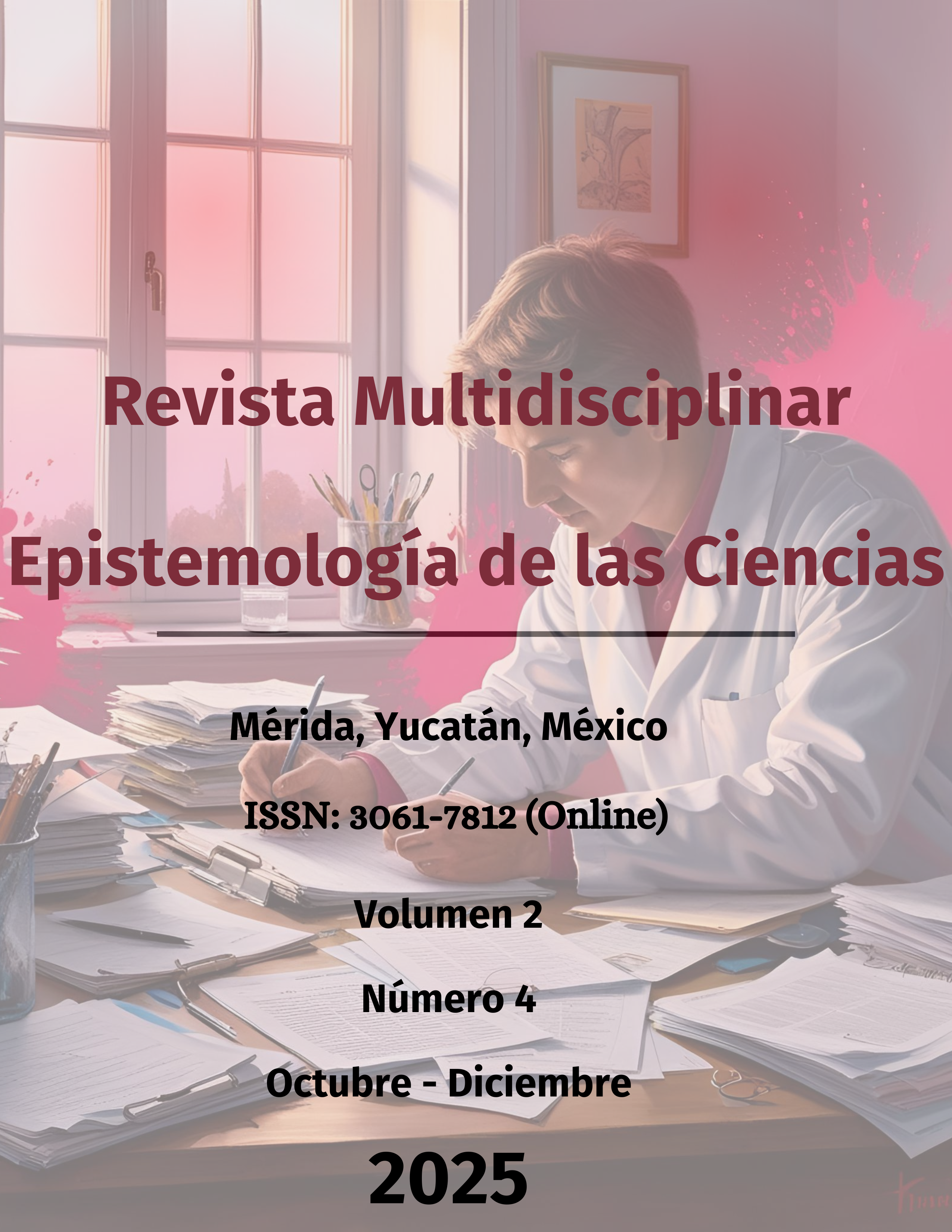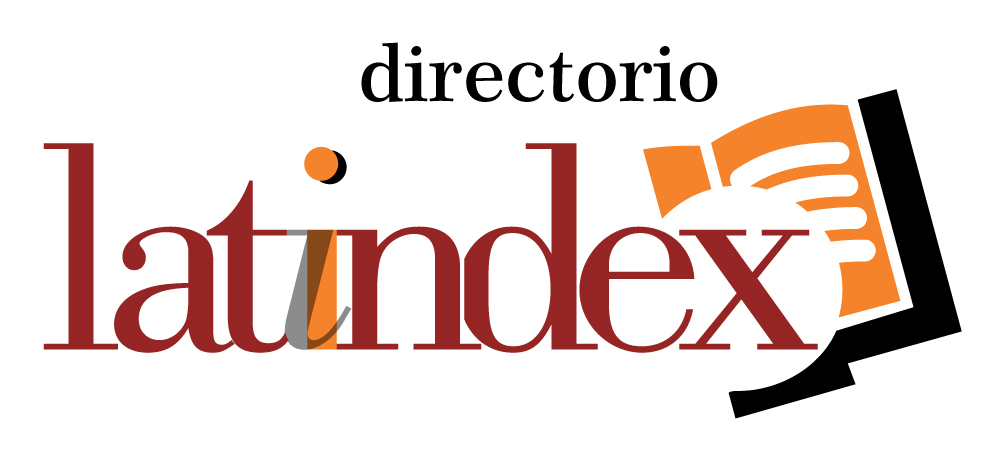Rol del personal de enfermería en el uso de las técnicas quirúrgicas avanzadas (TQUIAV) en la prevención y control de la hemorragia obstétrica
DOI:
https://doi.org/10.71112/82nrbs08Palabras clave:
hemorragia obstétrica, técnicas quirúrgicas avanzadas, enfermería perioperatoria, simulación clínica, seguridad maternaResumen
La hemorragia obstétrica continúa siendo una de las principales causas de mortalidad materna en el mundo, pese a los avances en las estrategias preventivas y terapéuticas. Las técnicas quirúrgicas avanzadas (TEQUIAV), como las suturas compresivas, el taponamiento intrauterino, la ligadura arterial y la embolización uterina, representan opciones eficaces para conservar el útero y controlar el sangrado cuando fracasa el tratamiento médico. Esta revisión sistemática tuvo como objetivo analizar la evidencia reciente sobre el rol del personal de enfermería en la implementación y apoyo de las TEQUIAV para la prevención y control de la hemorragia obstétrica. Se realizó una búsqueda exhaustiva en bases de datos internacionales (PubMed, Scopus, Cochrane, LILACS y SciELO) entre 2019 y 2025, seleccionando 20 artículos con calidad metodológica media y alta según las guías PRISMA 2020. Los resultados evidenciaron que la enfermería desempeña un papel decisivo en la preparación preoperatoria, la instrumentación quirúrgica, la monitorización hemodinámica intraoperatoria y el seguimiento posquirúrgico. Además, se identificó que la capacitación continua, la simulación clínica y la inclusión formal del personal de enfermería en los protocolos institucionales mejoran la seguridad y los desenlaces maternos. En conclusión, el fortalecimiento de las competencias técnicas y del liderazgo enfermero es fundamental para optimizar la eficacia de las TEQUIAV y reducir la morbilidad asociada a la hemorragia obstétrica.
Descargas
Referencias
Abdulsalam, M., Alnuaim, A., & Alshahrani, M. (2024). Twin pregnancy and postpartum haemorrhage: A systematic review and meta-analysis. BMC Pregnancy and Childbirth, 24(1), 221. https://pmc.ncbi.nlm.nih.gov/articles/PMC11451219/ DOI: https://doi.org/10.1186/s12884-024-06798-0
Agency for Healthcare Research and Quality (AHRQ). (2022). Postpartum hemorrhage in situ simulation: Sample scenario. Agency for Healthcare Research and Quality. https://www.ahrq.gov/
Alliance for Innovation on Maternal Health (AIM). (2024). Obstetric hemorrhage patient safety bundle—Change package. Institute for Healthcare Improvement. https://www.ihi.org/
Almutairi, F., Al-Otaibi, H., & Alharbi, S. (2025). The efficacy of simulation training in haemorrhage management among nurses. Cureus, 17(2), e11898481. https://pmc.ncbi.nlm.nih.gov/articles/PMC11898481/
Brazil, V., McLean, D., Lowe, B., Kordich, L., Cullen, D., De Araujo, V., Eldridge, T., & Purdy, E. (2022). A relational approach to improving interprofessional teamwork in post-partum haemorrhage (PPH). BMC Health Services Research, 22, 1108. https://doi.org/10.1186/s12913-022-08463-8 DOI: https://doi.org/10.1186/s12913-022-08463-8
Bouchghoul, H., Castaigne, V., Le Ray, C., Benhamou, D., & Fernandez, H. (2024). Uterine-sparing surgical procedures to control postpartum haemorrhage. American Journal of Obstetrics & Gynecology, 230(5), 463–475. https://doi.org/10.1016/j.ajog.2023.08.012 DOI: https://doi.org/10.1016/j.ajog.2022.06.018
Candidori, J., Rodrigues, A., & Santos, F. (2024). A novel low-cost uterine balloon tamponade kit to tackle postpartum haemorrhage. Scientific Reports, 14(1), 9876. https://www.nature.com/articles/s41598-024-60064-z DOI: https://doi.org/10.1038/s41598-024-60064-z
Card, R., Murphy, L., & AbouZahr, C. (2024). Vacuum-induced tamponade for managing postpartum haemorrhage. Journal of Maternal-Fetal & Neonatal Medicine, 37(4), 585–592. https://doi.org/10.1080/14767058.2024.2349957 DOI: https://doi.org/10.1080/14767058.2024.2349957
Denizli, B., Aksakal, O., & Yilmaz, T. (2023). Comparison of H-Hayman uterine compression suture with conventional vertical sutures: A cross-sectional study in a tertiary center. International Journal of Gynecology & Obstetrics, 162(3), 443–449. https://doi.org/10.1002/ijgo.14985 DOI: https://doi.org/10.1002/ijgo.14985
Elbiss, H., Al-Mansouri, M., & Ibrahim, R. (2025). Uterine artery embolization in the management of postpartum haemorrhage. World Journal of Emergency Surgery, 20(1), 45. https://wjes.biomedcentral.com/articles/10.1186/s13017-025-00580-z DOI: https://doi.org/10.1186/s13017-025-00580-z
Escobar, M. F., Lucovnik, M., & Althabe, F. (2022). FIGO recommendations on the management of postpartum haemorrhage 2022. International Journal of Gynecology & Obstetrics, 157(S1), 3–50. https://doi.org/10.1002/ijgo.14106 DOI: https://doi.org/10.1002/ijgo.14116
Gallos, I. D., Papadopoulou, A., Williams, M. J., & Vogel, J. P. (2023). Randomized trial of early detection and treatment of postpartum haemorrhage (E-MOTIVE). The New England Journal of Medicine, 389(14), 1329–1342. https://doi.org/10.1056/NEJMoa2303966 DOI: https://doi.org/10.1056/NEJMoa2303966
Han, S., Lee, E., & Park, J. (2024). A new step-wise surgical technique of knapsack-like uterine compression suture for refractory postpartum haemorrhage. BMC Pregnancy and Childbirth, 24(2), 115–124. https://doi.org/10.1186/s12884-023-06208-x DOI: https://doi.org/10.1186/s12884-023-06208-x
Hu, Q., Zhang, X., & Liu, Z. (2024). Timely use of Bakri intrauterine balloon tamponade contributes to effectiveness in controlling severe postpartum haemorrhage. Experimental and Therapeutic Medicine, 27(4), 341. https://doi.org/10.3892/etm.2024.12465 DOI: https://doi.org/10.3892/etm.2024.12465
Im, S. Y., Kim, T., & Park, J. H. (2025). The efficacy of uterine artery embolization for postpartum haemorrhage and risk factors for rebleeding. Diagnostic and Interventional Radiology, 31(1), 55–63. https://pubmed.ncbi.nlm.nih.gov/40512219/
Juarez, M., Torres, L., & Rivera, P. (2022). Bilateral ligation of the anterior trunk of the internal iliac artery after failure of uterine compression suture. Case Reports in Women’s Health, 36(1), e00420. https://www.sciencedirect.com/science/article/pii/S2666577822000259
Kaplanoglu, D., Ozdemir, C., & Karaman, E. (2024). The effect of B-Lynch uterine compression suture on outcomes in atonic postpartum haemorrhage. Ginekologia Polska, 95(3), 171–178. https://journals.viamedica.pl/ginekologia_polska/article/view/92963 DOI: https://doi.org/10.5603/gpl.92963
Liu, X., Zhang, L., & Chen, Y. (2023). Postoperative monitoring and outcomes in women undergoing uterine compression sutures for postpartum haemorrhage. International Journal of Gynecology & Obstetrics, 163(2), 341–349. https://doi.org/10.1002/ijgo.14826 DOI: https://doi.org/10.1002/ijgo.14826
Lutgendorf, M. A., Dildy, G. A., & Cahill, A. G. (2024). Interprofessional obstetric simulation training improves postpartum haemorrhage management and team coordination. BJOG: An International Journal of Obstetrics & Gynaecology, 131(2), 353–361. https://doi.org/10.1111/1471-0528.17640 DOI: https://doi.org/10.1111/1471-0528.17640
Minor, K. C., Patel, S., & Lin, T. (2024). Virtual simulation training for postpartum haemorrhage management in low-resource settings. Cureus, 16(7), e42159. https://doi.org/10.7759/cureus.42159 DOI: https://doi.org/10.7759/cureus.42159
Nabhan, A., El-Shamy, A., & Mohamed, M. (2022). Therapeutic effect of internal iliac artery ligation and uterine artery ligation in management of postpartum haemorrhage: A systematic review. Frontiers in Surgery, 9, 983297. https://doi.org/10.3389/fsurg.2022.983297 DOI: https://doi.org/10.3389/fsurg.2022.983297
Overton, E., Anumba, D. O. C., & Williams, C. (2024). Intrauterine balloon tamponade and uterine-sparing surgical techniques in obstetric haemorrhage: Evidence and best practices. American Journal of Obstetrics & Gynecology, 230(5), 476–488. https://doi.org/10.1016/j.ajog.2023.10.020 DOI: https://doi.org/10.1016/j.ajog.2023.10.020
Page, M. J., McKenzie, J. E., Bossuyt, P. M., Boutron, I., Hoffmann, T. C., Mulrow, C. D., & Moher, D. (2021). The PRISMA 2020 statement: An updated guideline for reporting systematic reviews. BMJ, 372, n71. https://doi.org/10.1136/bmj.n71 DOI: https://doi.org/10.1136/bmj.n71
Rachana, P., Gupta, S., & Mehta, N. (2024). A case of bilateral internal iliac artery ligation following caesarean hysterectomy for postpartum haemorrhage. Cureus, 16(5), e11534795. https://pmc.ncbi.nlm.nih.gov/articles/PMC11534795/
Shields, L. E., Clark, S. L., & Christmas, J. T. (2025). Effectiveness of the intrauterine balloon tamponade compared with a vacuum-induced haemorrhage-control device for postpartum haemorrhage. Obstetrics & Gynecology, 145(1), 125–134. https://journals.lww.com/greenjournal/fulltext/2025/01000/effectiveness_of_the_intrauterine_balloon.11.aspx DOI: https://doi.org/10.1097/AOG.0000000000005770
Vogel, J. P., Oladapo, O. T., & Bonet, M. (2024). Effectiveness of care bundles for prevention and treatment of postpartum haemorrhage: A systematic review and meta-analysis. American Journal of Obstetrics & Gynecology, 230(3), 220–232. https://doi.org/10.1016/j.ajog.2023.12.003 DOI: https://doi.org/10.1016/j.ajog.2023.12.003
World Health Organization (WHO). (2023). A roadmap to combat postpartum haemorrhage between 2023 and 2030. World Health Organization. https://iris.who.int/
World Health Organization (WHO). (2023). WHO recommendations on the assessment of postpartum blood loss and use of a treatment bundle for postpartum haemorrhage. World Health Organization. https://www.who.int/publications/i/item/9789240085398
World Medical Association. (2013). Declaration of Helsinki: Ethical principles for medical research involving human subjects. JAMA, 310(20), 2191–2194. https://doi.org/10.1001/jama.2013.281053 DOI: https://doi.org/10.1001/jama.2013.281053
Wu, N., Chen, Y., & Li, H. (2024). Effect of simulation-based training workshop on obstetric teamwork among midwives: A quasi-experimental study. Frontiers in Medicine, 11, 1282421. https://doi.org/10.3389/fmed.2024.1282421 DOI: https://doi.org/10.3389/fmed.2024.1282421
Yang, W. J., & Chen, F. (2024). Association between uterine artery embolization at first delivery and obstetric outcomes in subsequent pregnancies. Human Reproduction Open, 2024(3), hoae043. https://doi.org/10.1093/hropen/hoae043 DOI: https://doi.org/10.1093/hropen/hoae043
Zenani, N. E., Tulelo, P. M., Netshisaulu, K. G., Sepeng, N. V., Musie, M., Gundo, R., & Mulaudzi, F. (2025). A scoping review on the contribution of interprofessional collaborative practices on preventing and managing post-partum haemorrhage in the health care system. BMC Nursing, 24, 455. Enlace: https://bmcnurs.biomedcentral.com/articles/10.1186/s12912-025-02988-z DOI: https://doi.org/10.1186/s12912-025-02988-z
Publicado
Número
Sección
Licencia
Derechos de autor 2025 Revista Multidisciplinar Epistemología de las Ciencias

Esta obra está bajo una licencia internacional Creative Commons Atribución 4.0.











